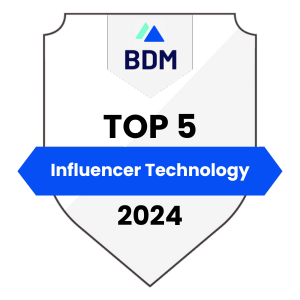Written by Myriam Roche, Founder of “Les Gens d’Internet”
165 million content creators. According to a recent study conducted by Adobe, this would be the number of influencers in the world who create posts and videos to inform, entertain, or share with their community on social networks. Some of them have made it their job. They make their living, in large part, thanks to partnerships with brands.
What if they could also be paid by the social networks themselves for all their creativity? YouTube, Twitch, Instagram, TikTok or Facebook have or are working on monetization programs to allow content creators to live from their passion. Welcome to the Creator Economy. If you don’t know this term yet, it refers to the economic ecosystem in which creators evolve and where they can multiply their sources of income: partnerships, monetization programs of social networks or even the sale of their own product.
In the era of the Creator Economy, what do social networks offer to satisfy influencers? How will the influencer marketing industry evolve? What partnerships are available to influencers today? Why are social networks in a frantic race to monetize content?
With this article, we will bring you all these answers.
For more than a decade, influencer marketing on social networks has been developing in Europe. This strategy consists of a set of techniques to take advantage of the recommendation or prescription power of these ambassadors, to reach a specific target, to make yourself known, to sell a specific product, or to transmit a message. To achieve this, there are now many collaboration formats. If sending products is one of the most used influence tools, it is far from being the only one to bear fruit.
Here is an overview of some possible types of partnerships between a brand and an influencer:
Voir cette publication sur InstagramUne publication partagée par Her World Singapore (@herworldsingapore)
Brands pay the creators directly. The pricing varies according to several criteria: the profile of the influencer, their reach, audience, the number of sales they generate, their estimated EMV. This remuneration allows creators to monetize their work on social networks and therefore, to live fully or partially off of it.
Beyond the traditional partnerships of influencer marketing, there is another method of remuneration, regularly used on social networks and websites: affiliate marketing.
Affiliation marketing is a marketing technique that consists in promoting a brand or a product on a website through advertising banners, sponsored articles, or promotional codes placed on publisher sites, called affiliates. From now on, affiliation is no longer limited to websites and blogs. This process puts influencer marketing at the heart of its techniques. Thus, in their content, influencers use affiliate links to promote a brand or a product. If a person clicks on their link and buys the product, they will receive a percentage of the sale price. They are therefore paid on a performance basis, with a commission system.
In parallel, pioneers like Amazon or Uber offer affiliate programs to influencers. They just need to sign up and then share a link or a promotional code with their subscribers. Every time someone uses it, they receive a commission. On Amazon, influencers have the possibility to have a dedicated page, as it is the case here with the American content creator Ashley Marquez.
Affiliation marketing is of great interest to social networks. For example, TikTok already offers features allowing users to earn commissions on sales generated via their profile.
At the end of 2022, the affiliation system offered to content creators evolves and moves to a hybrid format. If until now, the remuneration was focused on performance (per click or per sale), this “hybrid” model mixes a classic remuneration (fixed fee) and a performance-based remuneration.
We are in the middle of building the Creator Economy. Content creators could soon live from their activities on social networks, not only thanks to brands, but also thanks to social platforms.
Right now, social networks are in a state of flux. Everyone is thinking about the best way to satisfy content creators, fearing that the best of them leave for a competing application. Or worse, that users won’t connect anymore, because the content offered is not as captivating as before. This race to monetize content accelerated in particular when TikTok exploded in the course of 2020.
Monetization has already been implemented by platforms like Twitch and YouTube.
For many years, the platform has offered its users several monetization options. They have the possibility to charge subscriptions to attend exclusive lives and/or replays: subscribers get access to badges next to their name. The longer they are subscribed (3 months, 6 months…), the more benefits they get. This community can also send Bits (a virtual currency that turns into money) or make partnerships with brands. To access most of these features, streamers must become official partners of the platform.
 Monetization on Youtube
Monetization on YoutubeFor the past ten years, YouTubers have had the opportunity to monetize their videos. YouTube positions ads around and within their content. Depending on the number of views, videographers receive a sum of money every month or every quarter. In parallel, YouTube is considering a shopping option to allow creators to add clickable links to their content. TikTok has also inspired the social network, as a monetary fund has been set up to support content creation via Shorts, YouTube’s short format. Starting in 2023, videographers will have the opportunity to monetize this format.
If these first two platforms, YouTube and Twitch, have well established monetization programs, the others are trying to catch up.
 Monetization on Facebook
Monetization on FacebookThe Meta Group is in the midst of a rethink around its monetization offerings. Most of the features are similar to those offered by Instagram, which is also owned by the Meta Group.
 Monetization on Instagram
Monetization on InstagramFor the past three years, Instagram has been multiplying announcements to explain the arrival of monetization tools, which for the moment are still in the testing phase. Here is what the social network has communicated about:
To conclude on Facebook’s and Instagram’s ongoing work around monetization for content creators, it’s worth noting that in the US, some creators are previewing other monetization tools: video advertising, reward badges and Reels bonuses via the Reels Play program. For the rest of the world, these tools may soon be available if the tests in the US are successful.
 Monetization on TikTok
Monetization on TikTokSince its user base has exploded, the ByteDance team is testing different options to successfully monetize influencer content.
Since October 5, TikTok has revised its monetization program by offering a new formula available in beta-test in several countries. Creators are free to stay within the TikTok Creator Fund or to switch to this new option called “the TikTok Creation Program“. It is not possible to benefit from both at the same time. The objective is to allow videographers to earn a certain amount of money according to the number of views achieved on their videos of more than one minute. To access this program, you must meet several criteria: be over 18 years old, have more than 10,000 subscribers on your TikTok account and have at least 100,000 views on your videos over the last 30 days.
Facebook, Instagram and TikTok are not the only platforms looking to fund content creators. LinkedIn and Pinterest are planning on similar initiatives. LinkedIn has inaugurated the Creator Accelerator, a program for influencers, in the United States in 2021. The goal is to help them develop their content.
On the side of Pinterest, in the United States, the Creator Rewards is also a program that allows users to be compensated for creating posts.
With all of these options, content creators will have many possible choices regarding the monetization of their publications. The important thing to remember is that advertisers should no longer be the only ones funding creative work online.
Even though social networks already offer monetization solutions to content creators, the latter have other choices available to them. One of them is NFTs. This new form of marketing is a blessing for influencers. They have the opportunity to create an art form to be resold later via the technological tools developed by the Blockchain.
Content creators, such as Gmoney or Crypto Barista have made it their main source of income. They give advice to buy NFTs and also resell them. This is a significant source of income for them.
The list of these creators specialized in this field is growing. What if non-specialized influencers also started to do it? What if they could sell their creations via NFTs?
Although today there are still very few influencers who are tempted, it could well be that in the next few years, this strategy will be used more and more.
As they live from their creations, content creators have no other choice than to multiply their sources of income.
They most often work together with brands to realize partnerships. These collaborations take on many different forms, which gives them the opportunity to work on different projects.
To support content creators, social networks are trying to impact and positively evolve the Creator Economy. This economy will no longer be limited to one source of income, but will allow for more opportunities for all content creators to enjoy more financial and professional stability. To summarize, we can clearly say that the Creator Economy is composed of different protagonists, and that it influences the complex ecosystem of social networks and content creation.
Beyond the social networks that do a lot for the Creator Economy, there is another option for influencers to make a living from their passion: creating their own business. Around the world, many of them have launched a brand. There is for example Gaëlle Garcia Diaz with Martine Cosmetics, Chiara Ferragni and her eponymous brand or MrBeast with his restaurants. From their creative universe, they imagine their own creation to sell them later.
As you can see, social networks are constantly changing. And everything is going very fast. The Creator Economy is being built before our eyes.
Written by Myriam Roche, Founder of “Les Gens d’Internet”





